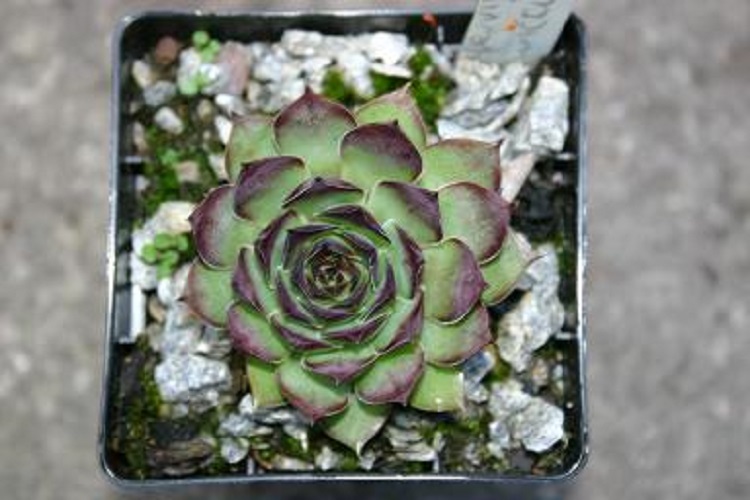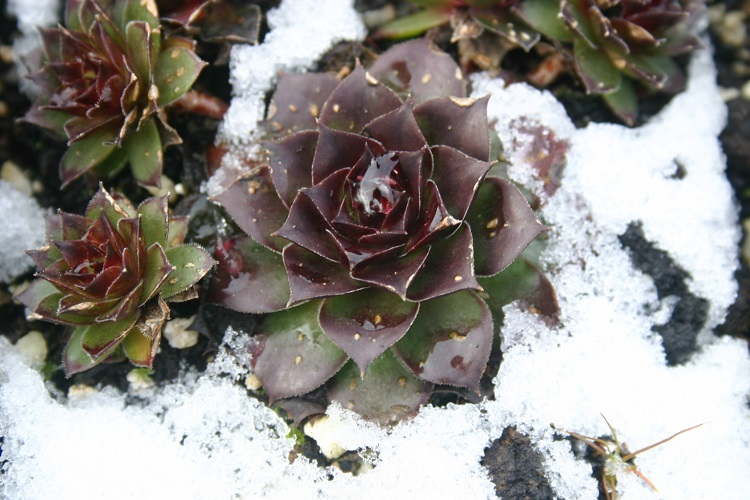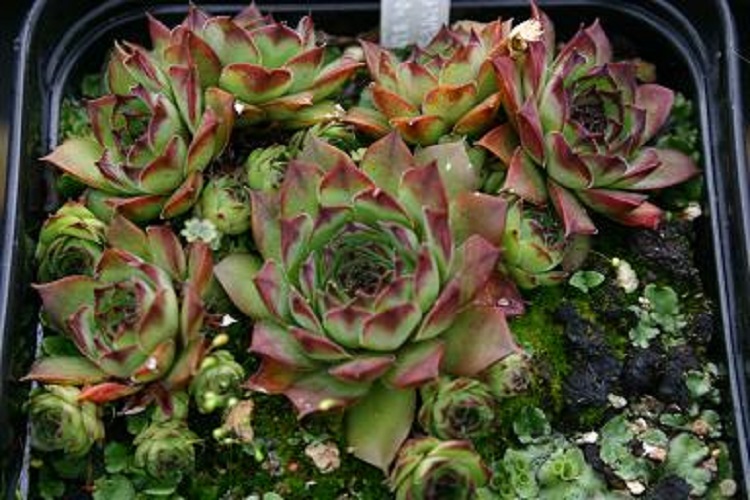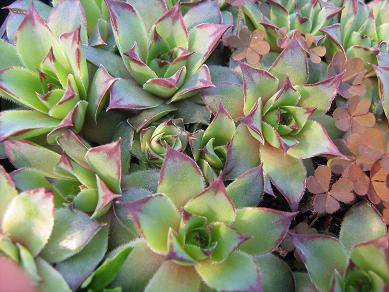 |
In 1982 Alpine Gardens in Dallas described it as "Small and neat. Tight, bright green rosettes. Leaves very finely hairy and fringed.".
It is thought that it was collected in the mountains of Austria or Switzerland and to be a complex hybrid involving S. arachnoideum
, S. montanum and S. tectorum. Named after Heinrick Funck. Horst Diehm said: "medium-sized green, sometimes red on the outside, star-shaped open rosettes 5 cm Ø, soon forming dense carpets. Leaves glandular hairy and ciliated on both sides. Flowers large, pinkish red with a strong red central stripe. Flower stalk 15 cm, July. Easy to cultivate." Georg Merkl wrote some notes on Funck quoted on Sempervivum List: "The pharmacist and botanist Heinrich Christian Funck (1771-1839) travelled the German and Swiss Alps. Since his youth, he has devoted himself to the plant world. In his Alpinum in Gefrees, he collected various types of houseleeks. But he also released his plants in nature in suitable places. As a result, in the Fichtel Mountains around Bad Berneck, an anointing of Sempervivum and Jovibarba globiferum ssp. arenaria species can be found. However, he has earned his greatest merits because of his work on deciduous mosses. The International Crassulaceae Network say on their website: "This hybrid is a well-known plant in gardens. It is characterized by its numerous wholly green dense rosettes of moderate size, with leaves glandular-hairy on both sides and conspicuously ciliate. The last character helps to distinguish it when not in flower from strong forms of montanum, which is obviously one of its parents. In bloom, the much shorter redder petals distinguish it at once from that species, in which the petals are very long and of a violet tinge. It cannot be mistaken for any form of its other two supposed parents. The origin of this well-marked and well-known plant is obscure. Hayek’s hypothesis is to the effect that a natural cross (arachnoideum var. doellianum x montanum ssp. stiriacum), brought to a garden, hybridized there with a tectorum form). There seems little doubt that this plant is a triple hybrid of the parentage suggested. Such hybrids may be not rare both in nature and in gardens, but they are very difficult to diagnose." |
|
| 9th August 2005 | ||


